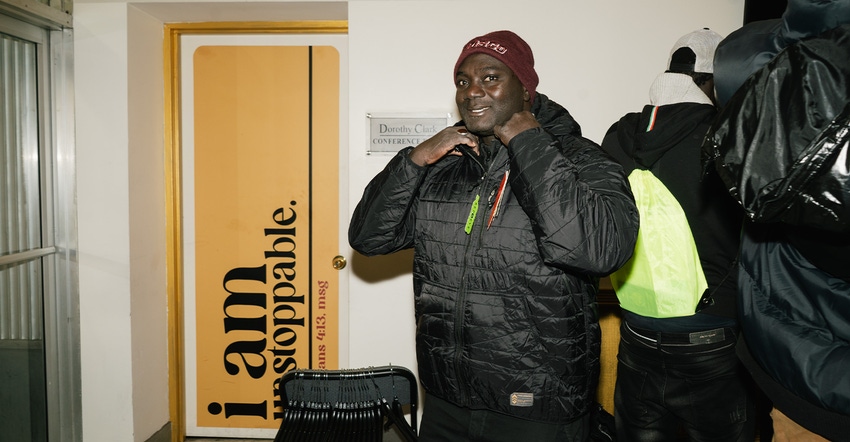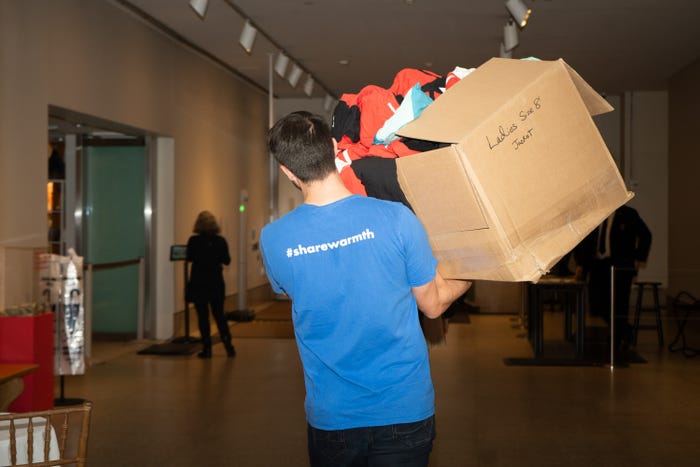One Warm Coat Softens Winter’s Blow for People in Need While Curbing Textile Waste
The chill of winter is taking hold, and no one is more aware of the bite in the air than children and adults who have no coats. Nonprofit One Warm Coat is helping take some of the edge off, having directed 8 million previously worn coats to people in need while diverting 19 million pounds of textiles from landfill.

The chill of winter is taking hold, and no one is more aware of the bite in the air than children and adults who have no coats. Nonprofit One Warm Coat is helping take some of the edge off, having directed 8 million previously worn coats to people in need while diverting 19 million pounds of textiles from landfill.
The nationwide operation took root after a banker turned philanthropist held one coat drive decades ago. She wanted to go further for more impact.
Today, One Warm Coat is powered by service clubs, churches, schools, Girl Scouts, and Boy Scouts. Businesses have joined the movement too, from a small local dental practice to retail giants the likes of J.Crew, H&M, and Lands’ End.

While the coat drive is the nonprofit’s largest and oldest program, a newer project is building steam — a zero-waste initiative where retailers, manufacturers, and wholesalers donate new, but unsellable outerwear. They are mostly irregular garments or overstock, though some of these would-be discards have a more interesting story behind them. About 500 hoodies found their way to One Warm Coat when a small print shop owner’s customer rejected them because he wasn’t happy with the logo. About 600 pairs of gloves, left with no place to go when a company folded, ended up in Nebraska, warming veterans in need.
“What’s helping us to carry out our work is a greater awareness that there are people who can use these garments. Also driving donations is that there’s been a spotlight on the fashion industry who is being asked to step up in terms of manufacturing processes, operations, and systems management for their excess inventory,” says Beth Amodio, president and CEO, One Warm Coat.
While they keep their owners toasty in blustery weather, coats are not the most environmentally friendly garments. In fact, they rank as the highest emissions generators in the fashion manufacturing world, alongside jeans and dresses. Besides that it takes a lot of material to make them, they typically have multiple fiber types between the inner and outer linings, hoods, and wind-resistant technologies. But reuse narrows that carbon footprint.
In the case of One Warm Coat’s zero-waste program, outerwear moves straight from donors’ warehouses to 1,500 agency partners who distribute them to the people they serve. The charities often pick them up; otherwise, One Warm Coat arranges for transportation through logistics partners.
This set up has been key to the operation’s success.
“It works because the donor knows the coats are going directly into the hands of the people who need them. It’s easy for businesses and they have no added storage expense,” Amodio says.
Agencies must commit to giving them away and to discriminating against no person in need. Collectively these charities have a huge cross section of missions. Some run shelters and food pantries. Another one supports inner city LGBTQIA youth. Yet another provides free teeth cleanings; workers noticed people would come in for their cleanings, then go out into the frigid air with no coat.
“We directed outerwear to the dental program and 11 other nonprofits in the Appalachians. They had a seam on the outside so they couldn’t be sold and would have been incinerated or shredded and landfilled if they were not donated,” Amodio says.
In 2021, the organization had a banner year when COVID-related supply chain issues caused a huge backup of shipments in Los Angeles. The major port was stymied and couldn’t get the containers to retailers before the winter sales ended. The bottleneck created issues for retailers but generated a lot of donations.
One Warm Coat is, and always has been, a virtual operation— a decision made in keeping with its commitment to sustainability. The remote, cloud-based model saves on greenhouse gas emissions from transportation, heat, and water. With no warehouse, Amodio figuratively compares her team to air traffic controllers directing coats from donors to agencies without actually touching them.
Activity has especially picked up in the past 15 years, which Amodio attributes partly to a skyrocketing employee engagement movement. Companies are realizing people want to work for an employer with a strong conscience, and employers want to build a sense of community with their workers.
They and other organizers hold bin-decorating contests. Sometimes participants leave notes in coat pockets –something thoughtful and uplifting like “Someone cares about you” or “Stay warm.” People love that personal touch, Amodio says.
“One thing we’ve seen that’s heartwarming is that when children outgrow a coat, they want to donate it back so someone else can use it. They know they will need another coat each winter and are cognizant that other kids will too.”
About 5% of donations are too tattered or stained to be worn, so Amodio has forged a new partnership to find other solutions. Textiles recycler Retold prepares them as scraps and sends them to rags companies; to manufacturers who use them as fillers for products like sleeping bags or for insulation; or they go to textiles processors who put fibers into new garments.
New Life Centers of Chicagoland is in overdrive working to meet its community’s needs.
This year besides the usual surplus and irregular stock from One Warm Coat, the charity got a surprise: coats from U.S. Soccer. Some of them were never worn, but no longer wanted because the logo and style have changed.
But to New Life, coming into those 600-plus coats as it braces for a minus-zero-degree winter was like striking gold. The team routinely reaches out to tens of thousands of locals who face poverty, and now helps refugees seeking asylum who come from countries engulfed in fierce political and economic crises.
“Migrants arrive daily, many in shorts and flip flops, ill-prepared for how cold it can get in Chicago. We are so thankful that organizations like U.S. Soccer are able to donate and have excess coats go to folks in need,” says Andre Gordillo, director of New Vecinos Program, New Life Centers of Chicagoland.
Clothing manufacturer Terracea has a long production cycle, requiring management to make educated guesses about future demand, which sometimes results in excess stock to deal with before the next wave of inventory.
The company was donating locally but through One Warm Coat is expanding its reach.
“It’s very nice for us to feel like we have a long-term partner we can continue to work with as our business shifts and grows,” says Vic Satir, general manager, Terracea.
“We feel additional confidence knowing we have a suitable partner that will help our products make an impact on peoples’ lives.”
About the Author(s)
You May Also Like




